With external factors such as rising labour costs, rapid technological advancements, and increasing global market d...
With external factors such as rising labour costs, rapid technological advancements, and increasing global market demand, manufacturing companies are now more open to adopting warehouse automation technologies in order to better cope with competition. Where warehouses are concerned, manufacturers’ awareness of new logistics handling technologies such as Automated Storage and Retrieval Systems (ASRS) is on the rise, and many are increasingly adopting automation to assist with efficiency and productivity for their storage and dispatch operations.
Companies successful with integrating automation in warehouses have reported higher levels of logistics accuracy, increased efficiency and productivity, and greater employee satisfaction. The benefits of an automated warehouse far exceed that of a manual warehouse. Many companies who have adopted automation attest to the fact that improved speed, elimination of human errors, and a reduced reliance on labour, can all be achieved by incorporating some degree of automation into their warehouses.
Think Again
Attractive and simple as it may all sound, deciding on when and how to adopt automation for a warehouse can be a complicated task - and not one to be taken lightly. Various aspects of a business need to be carefully reviewed before determining whether automation is the right fit.
For any manufacturer looking to enjoy the benefits of warehouse automation, here are five factors to consider before a commitment is made. These five factors are: existing floor plan and space, availability of operation data, delivery and transportation, warehouse safety factors, and investment budget.
1. Existing Floor Plan And Warehouse Space
Companies thinking of adopting warehouse automation should first assess their available floor plan and space. Careful planning is crucial, to ensure that the warehouse can integrate new functions easily in the future. Companies should aim to maximise their cube-wise space - length, width, and height - to fully optimise the warehouse for efficient material handling, order picking and storage processes, accommodating personnel movement and handling of equipment such as Automated Guided Vehicles (AGV).
Another important consideration is the location of the warehouse site. Warehouses located in countries with high seismic activity, such as Indonesia and Japan, typically have height restrictions to follow. Other considerations for safe operation include floor flatness, loading weight, and levelness of the warehouse structure. Companies that begin with these planning considerations will be well poised to enjoy smoother implementation of their automated warehouse.
2. Availability Of Operation Data
Once it has been determined that a space and its location are suitable for an automated warehouse, operation data then needs to be carefully collected and considered. This refers to not just actual facility throughput, but also to information on warehouse structure requirements such as loading and levelness, precision data on floor flatness, and even weather information as it relates to possible impact on warehouse structure durability.
When assembling such operation data, companies should include detailed product specifications such as weight, dimensions, sizes, and even stock keeping units (SKU). This will help to identify the type of warehouse structure that is required. Throughput data such as number of pallet movements and picking requirements, including order, case, or piece picking, are also needed to help companies make an informed choice about the type of automated logistics that they want to incorporate.
Additionally, the warehouse model is an essential factor. Companies need to determine if the warehouse is meant to function as a distribution hub, or simply for basic storage purposes. Assessing information on the current mode of loading (e.g. pallets, boxes, containers, or push carts) is another key factor that will allow companies to better estimate the degree of automated logistics that they will need to implement. Finally, the type of product (e.g. hazardous, corrosive, anti-static, etc.) and their corresponding storage requirements in terms of temperature, for example, are also important operation data that will need to be captured and considered.
3. Delivery And Transportation
A typical warehouse, automated or not, needs to properly accommodate delivery and transportation needs. In planning for a well-automated warehouse, companies will do well to consider how loading docks, and truck and car parking spaces need to be planned out to maximise the benefits of automation. The smooth flow of materials moving out of the facility needs to be emphasised here. Efficient automated warehouses should reflect a layout that facilitates movement well and makes the entire process a breeze.
Regardless of a company’s choice in storage procedures - be it just-in-time (JIT) or just-in-case (JIC) storage systems, it is important for companies to understand the storage model of a warehouse, and incorporate relevant handling techniques so that the delivery and transportation process will benefit from more seamless operation without unnecessary interference.
4. Warehouse Safety Factors
Arguably one of the most important factors in any warehouse, safety is no less important when switching from manual to automated warehousing systems. A basic safety criterion for all warehouses is to have fire protection capacity. For companies that are considering automation, ensuring that the warehouse facility is fully fitted with working fire alarms, up-to-date fire fighting equipment, detailed escape routes, and emergency exits, is essential. In many cases, it is necessary to re-examine safety needs and priorities with the addition of automated systems because the new and different processes can alter the safety conditions in a warehouse facility quite significantly.
Some other safety factors that companies can review may include changing worn-out exit and hazard-warning signage, layering on non-slip surface treatment for floors, and installing security systems such as closed-circuit television (CCTV). Companies that implement up-to-date warehouse safety features and conduct regular safety assessments and proper safety training for staff will be more assured of creating a safe haven within the automated storage and dispatch facility.
5. Automation Investment Budget
Although it is common and tempting for companies to look at budget as the first consideration towards automation, manufacturers are advised to evaluate the above four factors before determining the investment amount for an automated warehousing system. Doing so will ensure that all the necessary elements of an automated warehouse system are fairly assessed and not overlooked simply because of budget constraints. This will facilitate a longer-term approach and view of automation that will work to bring maximum benefit to the manufacturer.
Automated logistics suppliers are able to help with not just warehouse design planning, but can assist with budget planning, and return on investment (ROI) projections as well. Companies looking to automate warehousing logistics can then evaluate their capital investment against projected returns in terms of the system durability, cost and energy savings in the long term, and even the possibility of reducing manpower. This approach lends to a more holistic understanding of whether automated warehousing for any given facility is worth investing in.
Ready For Success
As outlined above, companies wanting to successfully incorporate some degree of automation in their warehousing operations have several factors to consider. Depending on the needs and priorities of each company, these five pointers may vary in importance, but they reflect the general considerations that most companies should cover before investing in an automated warehouse system. Manufacturers looking for the right warehousing solutions should seek out experienced warehouse system partners, and work closely with them to adopt a structured assessment approach to determine whether warehousing automation is the right fit. In the competitive manufacturing environment of today, the right choice in an automated warehouse solution and supplier can go a long way, and may make all the difference in achieving both immediate and long-term success.
![]()






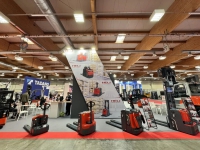
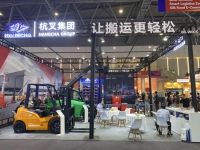

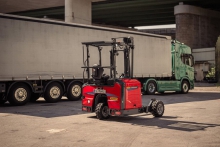

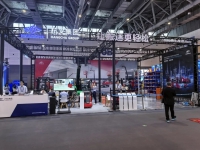

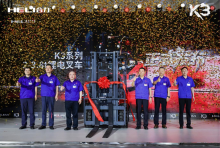


 粤公网安备 44010602003952号
粤公网安备 44010602003952号